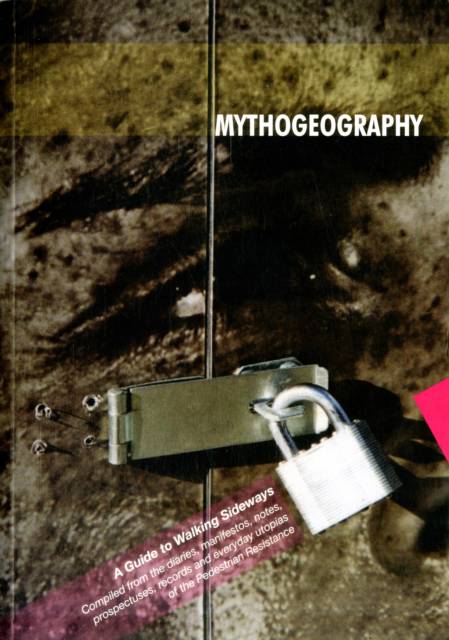
- Retrait gratuit dans votre magasin Club
- 7.000.000 titres dans notre catalogue
- Payer en toute sécurité
- Toujours un magasin près de chez vous
- Retrait gratuit dans votre magasin Club
- 7.000.0000 titres dans notre catalogue
- Payer en toute sécurité
- Toujours un magasin près de chez vous
Mythogeography
A Guide to Walking Sideways - Compiled from the Diaries, Manifestos, Notes, Prospectuses, Records and Everyday Utopias of the Pedestrian Resistance
Phil Smith
Livre broché | Anglais
41,45 €
+ 82 points
Description
"Mythogeography: A Guide to Walking Sideways ... is at once a handbook, a manifesto, and a parody of handbooks and manifestos, a formal subversion in the tradition of Marshall McLuhan's collaborations with Harley Parker, with their resistance of cover-to-cover trajectory... ...despite its 'handbook' guise, Mythogeography offers neither practical application nor theoretical rubric. For example, the book begins with a map legend. Rather than wed hieroglyphic stamps to functional signifiers, they indicate 'pylons', 'tripods', 'benchmarks', 'wormholes', 'footnotes within footnotes', et cetera. These symbols continue through the manuscript, along the outer margins of the page, but they defy consonance with the text. This lends the book a complexity that parodies and rejects navigation, adding a layer of abstruse anti-meaning... ... The puckish nature of Mythogeography, alternating its informal punk aesthetic with postmodern academic patois, demands that we suspend our disbelief and embrace its stream of consciousness. With its manifold purposes, as travel guide, fiction, memoir, and encyclopedia, Smith's writing gives this impression of medleyed voices... The author's dedication to his thematically complex and inaccessible structure is impressive. His subject lends itself to improvised form, and the book, in its codified, non-linear construction, is distinguished from other works on related subjects. ... The book invites comparison to Iain Sinclair's London Orbital (a circumnavigation of London's M25 highway on foot) although Mythogeography does not have Sinclair's site-specific concentration. It also seems a close relative of the artist Patrick Keiller's series of films about England's changing landscape (London, Robinson in Space, Robinson in Ruins), which similarly meld fiction and fact. That these works are all a product of European, specifically British, psychogeography is not coincidental... Mythogeography, with its self-referential and folkloric sensibilities, also owes a debt to McLuhan and Jorge Luis Borges, for whom the architecture of the book was a primary theme. Philosophies of space and mapping are not alien to the history and theory of the book, and Smith demonstrates a unique understanding of this relationship between subject and form. From a review in Journal of Cultural Geography
Spécifications
Parties prenantes
- Auteur(s) :
- Editeur:
Contenu
- Nombre de pages :
- 256
- Langue:
- Anglais
Caractéristiques
- EAN:
- 9780956263131
- Date de parution :
- 20-04-10
- Format:
- Livre broché
- Format numérique:
- Trade paperback (VS)
- Dimensions :
- 172 mm x 242 mm
- Poids :
- 616 g

Les avis
Nous publions uniquement les avis qui respectent les conditions requises. Consultez nos conditions pour les avis.






